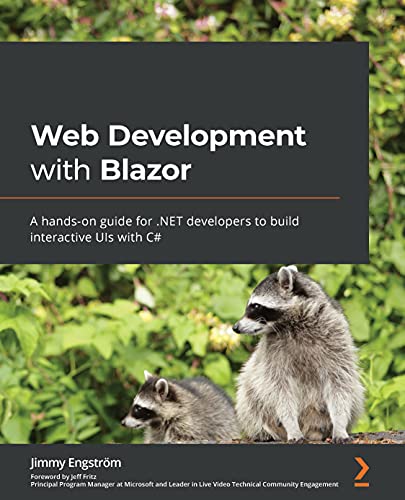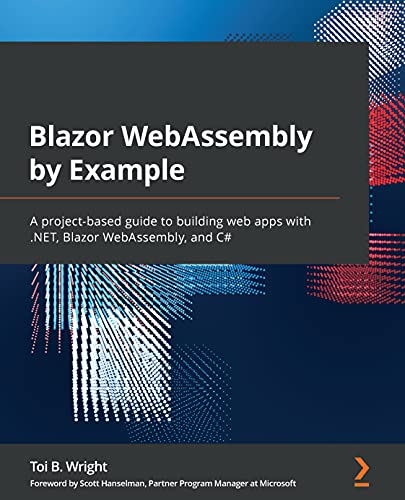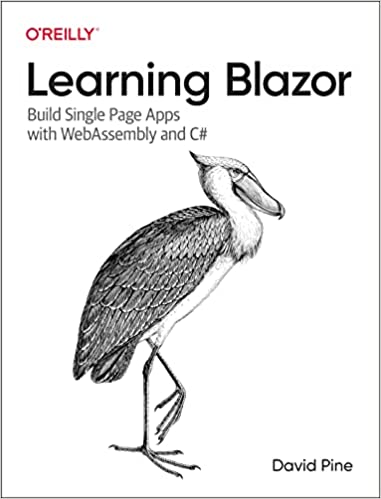
Blazor is fundamental for those looking to build interactive, reliable, and scalable web apps without JavaScript. However, it has a learning curve. That is where Blazor books come in. They have insights on all that Blazor entails and how it works. Whether you are a beginner web developer or experienced, the books on this list have something for you.
What is Microsoft’s Blazer?
Blazor is a free and open source web application framework that enables developers to create web applications using C# and HTML. In a nutshell you can develop web apps with C# instead of JavaScript.
What Are The Top Blazor Books To Master The Framework?

Blazor in Action, by Chris Sainty
This is a practical guide on how to use C# and .NET to create stunning UIs and client-side applications. It contains a Blazor front-end framework that will help you make an excellent web application for plotting hiking routes.
While at it, you will also learn how to build your application and master the primary features of Blazor- forms and validation, routing, and dynamic and reusable components. You will discover how to pick a suitable hosting model, secure and test your application, role-based security, and how to integrate JavaScript libraries.
Blazor in Action also includes a section that covers data persistence, state management, and data testing. This section will come in handy to help you ready your app’s production.
By the time you finish this read, you should be ready to develop beautiful apps and sites for seamless C# browser executions.

Web Development with Blazor, by Jimmy Engström
Web developers who are starting to use Blazor often face some challenges. But this book is here to help you discover the best coding practices. You will first learn how to leverage Blazor’s power and how to explore Blazor Server and Blazor WebAssembly capabilities.
You will then get into the practical part, built around a project sample-a blog engine. Here, you will apply what you learned about Blazor Server creation and Blazor WebAssembly projects, validating forms, how the Razor syntax works, and creating your components.
You will discover the primary concepts that revolve around Blazor web development and also be helped to put them into practice. By seeing how these components practically work in unison, you can do away with some of the Blazor roadblocks and be inspired to begin experimenting with various projects.
At the end of it all, you will have the confidence to create and deploy ready Blazor applications.

Exploring Blazor, by Taurius Litvinavicius
Exploring Blazor covers the three giants of Blazor- server-side, client-side, and hosted together with their other technological features.
Taurius starts this book with a WebAssembly introduction and shares an overview of Blazor and its categories. He then proceeds to help readers understand the basics, like how to implement Razor Syntax. This is where you will learn about the critical differences between Razor and Blazor and syntax functionality.
You get a layout demo and then navigate to the server-side. The use of Razor syntax follows Blazor for the control of the client-side Blazor application. There are details about project layout, navigation, and API routes.
You will make out API accessibility from the front-end and employ the shared library for various models, find out how Blazor collaborates files, storage, and JavaScript, then create Blazor web applications for different scenarios.

Microsoft Blazor, by Peter Himschoot
This second edition has been updated and covers how to use Blazor to create server-side and WebAssembly applications. As a developer, you will be helped to use your experience in .NET alongside existing libraries on your browser of choice.
The book has new and profound coverage of Razor syntax and Blazor validation for user input. It also discusses creating complex and interactive components with Templated components and Cascading Properties.
Get to discover how to create UIs and present data for modification and display and how to capture user changes through data binding. Microsoft Blazor also illustrates how you can access a rich .NET functionality library like a component model to build a composed UI.
You also learn how to develop reusable components for different websites and pages and get insights about data server exchange for database services and microservices access.

Blazor WebAssembly by Example, by Toi B. Wright
This book will enable you to run C# code on a browser without needing JavaScript or relying on add-ons or plugins. The only technical aspect required to use Blazor WebAssembly is a modern browser, provided it can support WebAssembly.
This book is a project-based guide to help you learn how to create single-page web apps using the Blazor WebAssembly framework with more emphasis on practicalities than theory. It has detailed steps and instructions for every project.
You will learn how to build simple standalone web apps and then go on to develop more advanced hosted web apps using SQL Server backends. Every project in the book guides you through different aspects of the WebAssembly ecosystem, including JavaScript interop, Razor essentials, application state, event handling, Web APIs, and .NET dependency injection.

Learning Blazor, by David Pine
Learning Blazor is the read you need to capitalize your C# skills and build client-side experiences and beautiful UI components using .NET.
David specializes in .NET and Azure content and informs readers how to deploy and host Azure Static Web applications automatically while relying on HTTP services. He will help you see how you can use Azure Cognitive Services Translator service and GitHub Actions to localize an enterprise-scale app if you are a sole developer.
This book will assist you in comprehending how WebAssembly allows various non-Java Script programming languages to work on client browsers.
You will learn about ASP.NET Core SignalR real-time web functionality and the strategies required for bidirectional JavaScript interop. There are also details on local storage, in-memory state management, hierarchical event-driven communications, and data binding.
The book also illustrates how to use geolocation services native to the browser, create advanced validation scenarios, validate a user, and the best strategy to build dependable and architecturally sound websites.
Final Thoughts on the top Blazor Books
Do the complexities of JavaScript make you want to step away and use proven technology for web development? If so, then you probably need to shift to Blazor if you haven’t. Use any of the books above to get more insights and broaden your knowledge.
Check also our favorite AI books to explore future possibilities.
